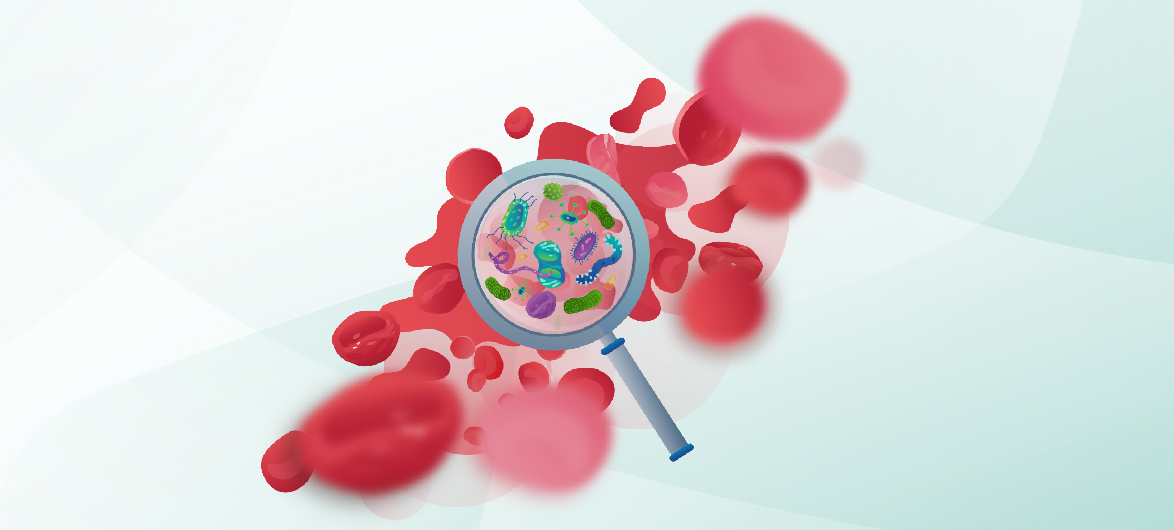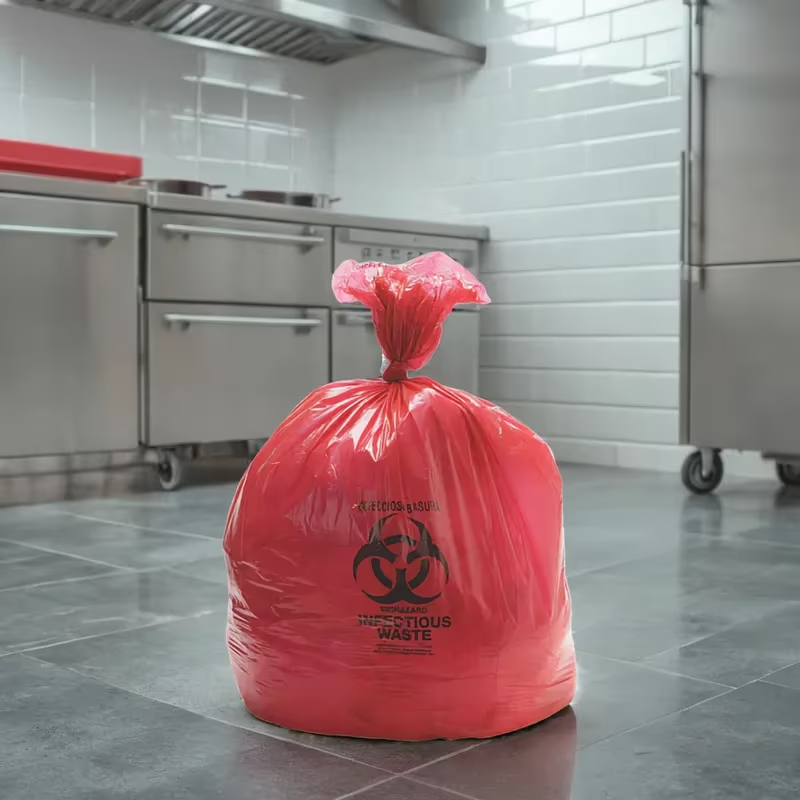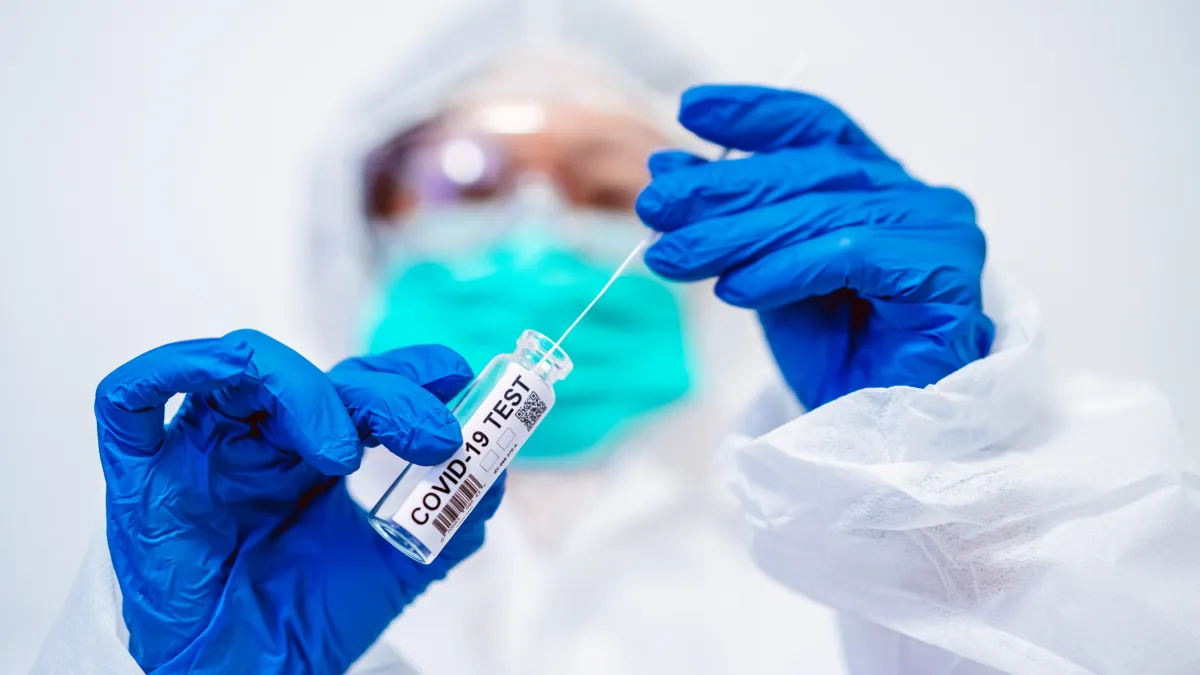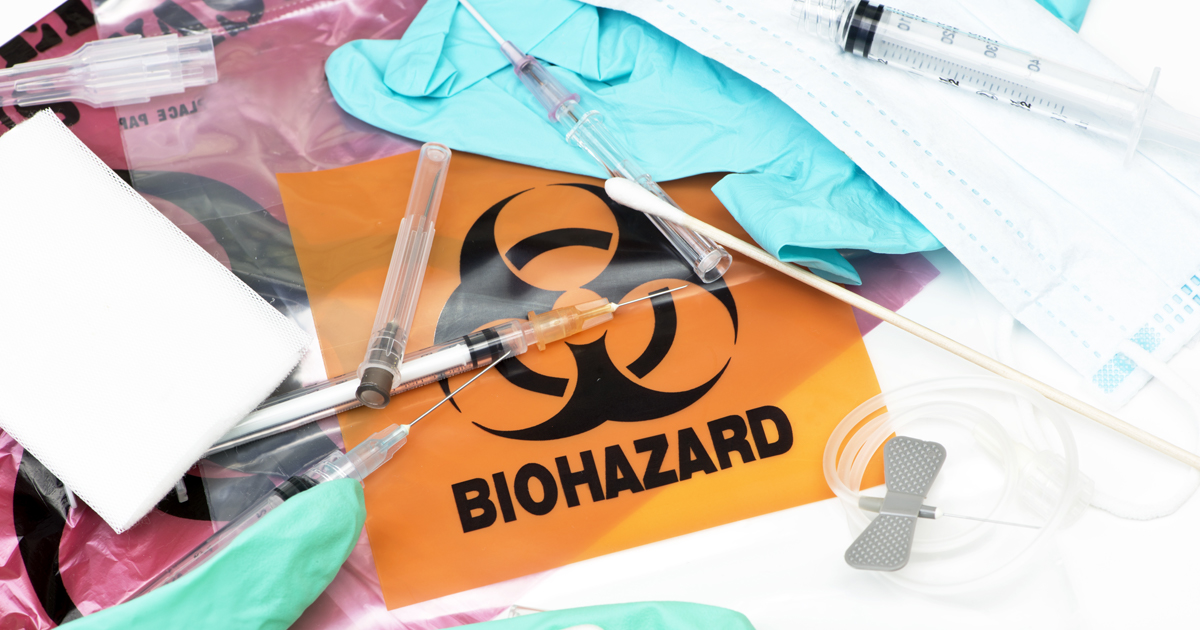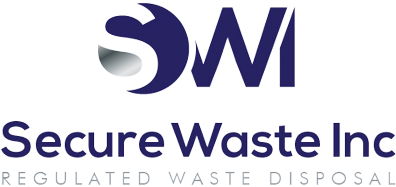Preventing Bloodborne Pathogen Exposure: Ensuring Safety and Compliance
Secure Waste explains that bloodborne pathogens – infectious microorganisms such as hepatitis B (HBV), hepatitis C (HCV), and human immunodeficiency viruses (HIV) – are present in human blood and certain body fluids.
These pathogens can cause severe disease, making exposure a critical concern for any workplace where blood or other potentially infectious materials (OPIM) may be encountered. The Centers for Disease Control and Prevention (CDC) estimates that U.S. healthcare workers sustain roughly 385,000 needlestick and sharps-related injuries each year.
Many of these injuries can transmit bloodborne diseases unless proper precautions exist. Preventing such exposures requires a combination of safe practices, strict regulatory compliance, and effective waste disposal. This article outlines proven strategies to protect healthcare personnel, businesses, schools, and the general public from bloodborne pathogen risks.
It explains how partnering with a qualified provider like Secure Waste can help ensure safety and compliance.
What Are Bloodborne Pathogens and How Are They Transmitted?
Bloodborne pathogens are disease-causing microorganisms carried in human blood or certain body fluids. By federal definition, these include HIV, HBV, and HCV, among others.
Exposure can occur via contaminated percutaneous injuries (for example, accidental needlestick or scalpel cuts) through contact with mucous membranes (eyes, nose, mouth) or broken skin with infected blood or OPIM.
OPIM extends beyond visible blood – it includes body fluids such as semen, vaginal secretions, cerebrospinal fluid, synovial fluid, and any fluid visibly contaminated with blood, as well as unfixed human tissues and certain laboratory specimens.
In short, any direct contact with another person’s blood (or fluids that may contain bloodborne viruses) must be treated as a potential infection hazard.
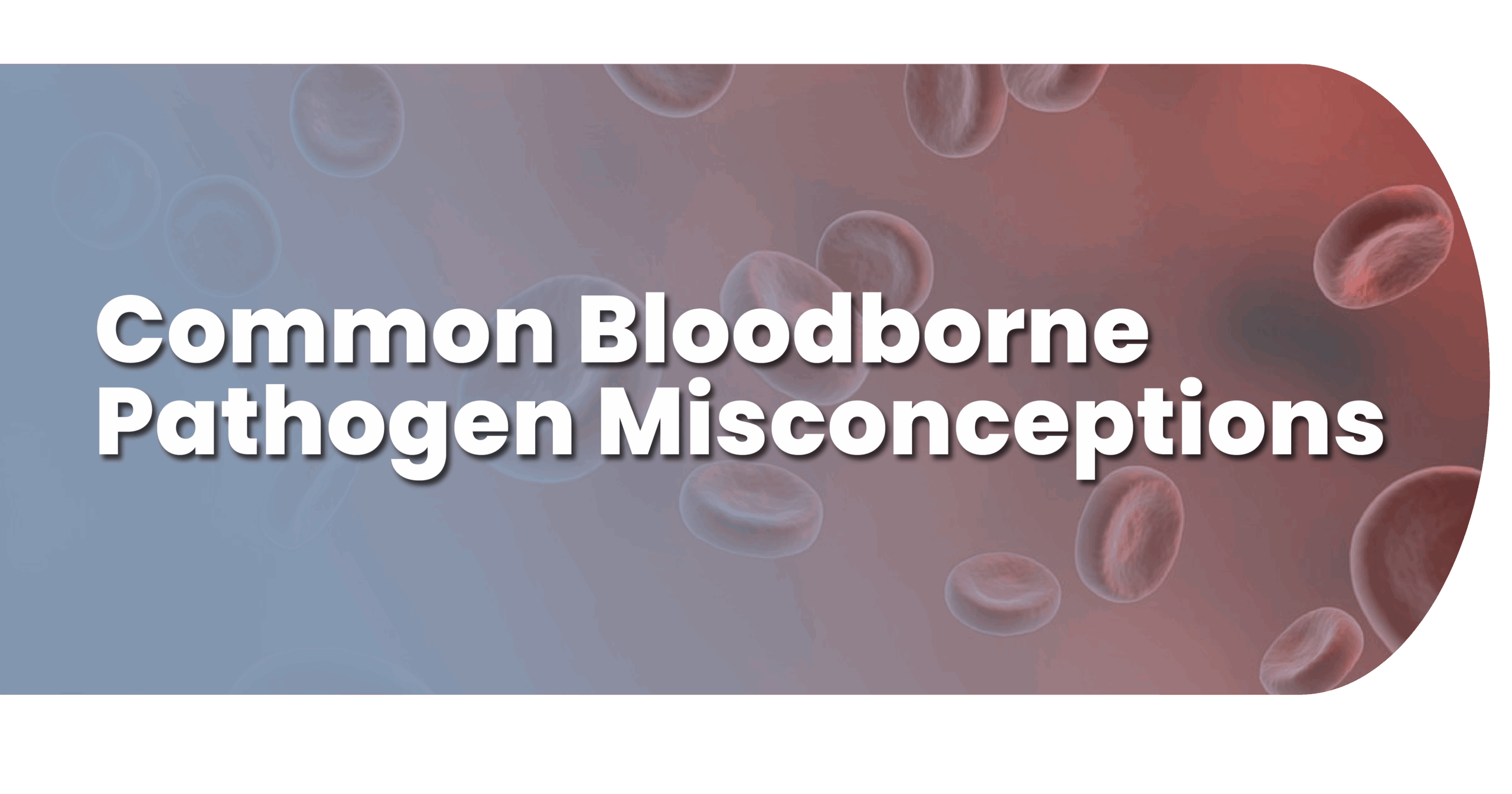
Secure Waste Maryland’s disposal company resource guide highlights that percutaneous injuries from sharps are the most significant transmission risk.
A contaminated needle injury instantly exposes an individual to pathogens. Even when broken skin is not punctured, splash incidents (for example, a blood droplet into the eye) can transmit infection if not handled properly.
Because of this danger, health authorities mandate that all blood and certain body fluids be treated as infectious, following a concept known as Universal Precautions. This means wearing appropriate personal protective equipment (PPE) and handling any material that may harbor bloodborne germs.
Who Is at Risk of Exposure?
Occupational exposure to bloodborne pathogens is not limited to hospitals. Any worker who could reasonably encounter blood or OPIM must be protected under OSHA’s Bloodborne Pathogens Standard.
The standard explicitly covers all who might “come into contact with blood or other potentially infectious materials.”
This includes healthcare professionals – nurses, doctors, medical assistants, laboratory technicians, and dentists who routinely work with blood or body fluids. It also encompasses dentists, dental hygienists (who deal with saliva and sharps), and laboratory staff handling blood samples or cultures.
Beyond the clinical setting, many other jobs face exposure risks. OSHA guidance notes that home health aides, custodial staff, childcare workers, law enforcement, firefighters, and even certain maintenance or service personnel can incur bloodborne exposures on the job.
For example, a plumber repairing a building might cut themselves and come into contact with contaminated waste, or a janitor might clean up a blood spill.
Schools and universities also have at-risk individuals: school nurses, athletic trainers, science teachers, and first responders on site should be trained and equipped for BBP precautions.
Even first aid by laypersons (e.g., stopping bleeding in an accident) requires caution. Because exposure hazards can arise in diverse environments, it is crucial that all employers – not just hospitals – understand these risks and implement protections.
Regulatory Requirements: OSHA’s Bloodborne Pathogens Standard
Federal regulations set the minimum requirements for bloodborne pathogen safety. In the U.S., the Occupational Safety and Health Administration (OSHA) enforces the Bloodborne Pathogens Standard (29 CFR 1910.1030).
This rule requires employers to develop and maintain an Exposure Control Plan tailored to their workplace to eliminate or minimize occupational exposure to blood and OPIM.
Key provisions include providing appropriate engineering controls and work practices (such as sharps containers and safe-handling procedures), offering the hepatitis B vaccine to at-risk employees, ensuring the availability and use of PPE, and conducting regular training and medical follow-up.
In practical terms, compliance means that any organization – a hospital, clinic, school, or business with possible blood exposure – must train employees on BBP hazards, supply gloves, masks, goggles, gowns, and other PPE as needed, and establish accident protocols.
OSHA explicitly mandates “Universal Precautions,” an approach where workers treat all human blood and certain body fluids as if known to be infectious. More recently, the CDC’s Standard Precautions recommendations underscore hand hygiene, barrier protection, safe injection practices, and other measures for all patients and settings.
Secure Waste industry guide explains that compliance isn’t optional: it increases worker safety. Healthcare organizations frequently rank BBP violations among the top OSHA citations, reflecting how often rules are overlooked.
Failing to manage bloodborne risks properly can result in illness, workers’ compensation claims, legal action, and costly fines – not to mention human tragedy if a staff member or patient acquires an infection. Conversely, a robust BBP compliance program reduces these risks and liabilities.
Key Prevention Strategies
Preventing bloodborne exposures relies on layering multiple safeguards. Employers and workers should simultaneously adopt engineering controls, safe work practices, PPE, and education. OSHA, CDC, and infection control experts universally recommend the following strategies:
- PPE and Hand Hygiene: Accessible PPE is critical. Gloves must be worn whenever contact with blood or fluids is likely, and eye protection, masks, and gowns should be used during procedures that might splash fluids.
Secure Waste emphasizes that PPE must be available in all required sizes and easily accessible. Equally important is thorough hand hygiene. OSHA requires prompt washing with soap and water (or flushing mucous membranes) after any contact with blood or OPIM.Frequent glove changes and handwashing break the chain of infection. All staff and students should be trained never to touch their faces with contaminated gloves and to sanitize hands immediately if exposure occurs.
- Sharps Safety: Since needles and other sharp instruments are the most common BBP transmission vectors, sharps handling is a priority. Workers must use safety-engineered sharps when available—for example, retractable needles or needleless IV systems—which the CDC lists as primary engineering controls.
All used sharps must be disposed of directly into approved sharps containers immediately after use. OSHA rules explicitly forbid recapping used needles under normal conditions; instead, dispose of them in a rigid, puncture-resistant, leak-proof container.These containers (often red or labeled biohazard) should be placed as close as possible to the point of use, so disposal is quick and convenient. Secure Waste of Maryland notes that strategically locating sharps boxes in patient care areas significantly reduces unsafe needle handling. Never throw loose sharps into regular trash or recycling bins.
- Safe Waste Disposal: Proper disposal of contaminated materials – dressings, PPE, blood-tinged wipes – is another critical layer. Any waste soaked with blood or OPIM, as well as needles and other sharps, must be segregated as regulated medical waste. These items should be in leak-proof, labeled biohazard bags or containers.
This containment prevents waste handlers and the public from accidental exposure. (Biohazard waste should never be disposed of in ordinary dumpsters.)
According to CDC infection-control guidelines, the definition of regulated waste targets items with “sufficient potential risk” like blood specimens and contaminated sharps. Secure Waste’s guidance warns that
poor disposal of biohazardous waste is catastrophic: “Direct contact with contaminated materials can cause infection, and healthcare workers have a higher risk through needlestick accidents.”
Environmental hazards also arise if infectious materials reach the community or water systems, underscoring the need for controlled disposal from “generation to required disposition.”
- Training and Emergency Response: All potentially exposed employees (and even first responders or school staff) must receive comprehensive training on bloodborne risks and procedures. OSHA mandates initial BBP training and yearly refreshers, covering topics like hazard recognition, proper PPE use, disposal protocols, and post-exposure actions.
Qualified instructors should provide training (including online modules when needed) and be updated whenever protocols or equipment change.
Organizations must also implement post-exposure evaluation and prophylaxis procedures as part of an exposure control plan
. For instance, if a needlestick occurs, the exposed person should immediately wash the area, report the incident, and receive medical evaluation including possible prophylactic treatment for hepatitis B or HIV. Vaccinations (especially Hepatitis B) should be offered at no cost to at-risk workers and routinely confirmed.
By combining these practices, workplaces create a robust shield against bloodborne hazards. No single measure is foolproof, but they dramatically lower the chance of transmission.
Health agencies emphasize that diligent Standard Precautions (universal precautions plus additional safeguards) will “reduce the chances” of acquiring HBV, HCV, HIV, and other bloodborne infections.
Ensuring Compliance Across Healthcare Industries
Although hospitals and clinics often follow BBP protocols, many non-medical settings must also comply. Dental offices, research labs, tattoo parlors, and mortuaries all generate biohazardous waste.
In the corporate or educational world, any facility with a first aid station or health clinic is accountable. For example, school nurses might need to handle blood glucose lancets or clean up after injuries, creating sharps and contaminated waste.
Building maintenance teams and cleaning crews must know how to safely clean when encountering blood spills or used syringes left in restrooms. OSHA regulations extend to these workplaces: the Bloodborne Pathogens Standard applies to any employee with a reasonable chance of exposure.
Failing to recognize this broad scope can leave gaps in safety. Secure Waste’s compliance experts note that state and local agencies often mirror OSHA’s baseline rule. For instance, Maryland, Virginia, and D.C. healthcare facilities must meet both federal and local biohazard disposal regulations.
Even in states without specific BBP laws, best practices still require proper containment and disposal. Facilities serving multiple industries (airports, schools, government buildings) should develop a coordinated exposure plan that addresses all staff roles.
In short, diligence is essential no matter where exposure might occur. OSHA and CDC guidance exist to protect lives and reduce liability.
Companies should regularly audit their compliance: confirm that bloodborne pathogen policies are up-to-date, that staff have completed training, and that experts are handling sharps and medical waste.
Engaging with professionals helps: Secure Waste, for example, offers OSHA training modules and compliance assistance so organizations stay current with regulations.
The Crucial Role of Waste Management
Proper management of regulated medical waste is the final line of defense in preventing BBP exposure. Even when workers follow safety protocols during patient care or lab work, any misstep in disposing of contaminated materials can undo those efforts.
Secure Waste’s experience shows that partnering with a qualified disposal provider ensures that blood and OPIM waste never endangers custodial staff, the public, or the environment.
A reputable medical waste company will use rigorous chain-of-custody procedures: collecting wastes in approved containers, transporting them safely, and treating or disposing of them at licensed facilities.
This keeps workers safe and guarantees compliance with OSHA, EPA, DOT, and local rules. As Secure Waste notes, agencies like the EPA and Department of Transportation impose rules on medical waste disposal and shipping, so any waste hauler must follow strict guidelines. Organizations avoid the pitfalls of self-disposal and potential violations by outsourcing to experts who meet these regulations.
Moreover, specialized waste companies often provide supplemental supplies like approved sharps boxes and red biohazard bags, ensuring you always have the right tools on hand. Secure Waste, for instance, sells OSHA-compliant sharps containers and a full range of infection-control supplies.
Because they serve Maryland, Virginia, and Washington, D.C., they stay abreast of every local requirement. In short, proper waste management is not just a housekeeping detail—it’s a fundamental aspect of any bloodborne pathogen prevention strategy.
Training and Culture of Safety
A strong safety culture must back technical controls. Management commitment and employee buy-in are critical for consistent precautions. Regular training sessions, safety reminders, and supervision reinforce the importance of compliance.
Examples of best practices include conducting drills for blood spill cleanups, prominently posting BBP policies, and recognizing staff who consistently follow protocols. Some organizations use audits or incident reviews to identify gaps and retrain as needed.
Crucially, employees should feel empowered to speak up if they see unsafe practices or a lack of supplies. An environment where staff can report near misses or expose hazards (for example, a broken sharps container or missing gloves) without fear encourages continuous improvement.
Regulatory bodies recognize this; OSHA’s Bloodborne Pathogen Standard and CDC guidelines both stress that prevention requires ongoing education and engagement.
Why Choose Secure Waste for Compliance Solutions
Implementing all these measures can be complex, especially for organizations without in-house environmental health expertise.
This is where a specialized partner like Secure Waste adds value. Secure Waste is a regional leader in regulated medical waste management with over 25 years of experience. They serve healthcare facilities, labs, businesses, and institutions across Maryland, Virginia, and Washington, D.C., offering comprehensive services that help clients stay compliant and safe.
Secure Waste’s services include picking and disposing of sharps, biohazardous waste (such as blood-contaminated materials and laboratory specimens), and other regulated medical waste streams.
They also sell EPA/OSHA-compliant sharps containers and biohazard supplies, making it easy for organizations to meet containment requirements. By providing ready access to proper containers and disposal pickups, Secure Waste removes the burden of navigating complex regulations alone.
Importantly, Secure Waste emphasizes affordability and flexibility. Their plans come with no long-term contracts and transparent pricing.
Clients work with a dedicated account manager to tailor services to their size and waste generation. The bottom line is that Secure Waste’s team ensures your disposal procedures align with federal, state, and local laws, giving you peace of mind. Whether you operate a hospital, outpatient clinic, lab, or school, you can rely on Secure Waste to handle the waste side of compliance so you can focus on safety and service.
Conclusion: Ensuring Safety with Secure Waste
Preventing bloodborne pathogen exposure is an ongoing commitment that touches every part of an organization. By understanding the risks, rigorously applying universal precautions and OSHA’s Bloodborne Pathogen standards, and properly disposing of biohazardous waste, you can protect your employees and the public from potentially life-threatening infections.
Key steps include providing ample PPE and hand hygiene stations, enforcing sharps safety (no recapping, immediate disposal), educating all staff, and having a clear exposure-response plan.
Ultimately, safety and compliance go hand in hand. To effectively meet both, choose Secure Waste as your medical waste partner.
With Secure Waste handling your sharps containers, Biomedical, and Regulated waste streams, you ensure that professionals secure, track, and treat every potential infectious item. Their experienced team understands all aspects of OSHA, EPA, and local requirements and will work with you to create a customized waste management plan.
Don’t let bloodborne hazards compromise your workplace. Reach out to Secure Waste today for expert guidance and service. You can request a free quote or consult with their specialists by visiting www.securewaste.net or calling 877-633-7328. Secure Waste offers no-contract, cost-effective solutions to keep your facility compliant, safe, and sustainable. By partnering with them, you gain peace of mind knowing that regulated waste disposal – a critical component of BBP exposure prevention – is handled reliably and responsibly.
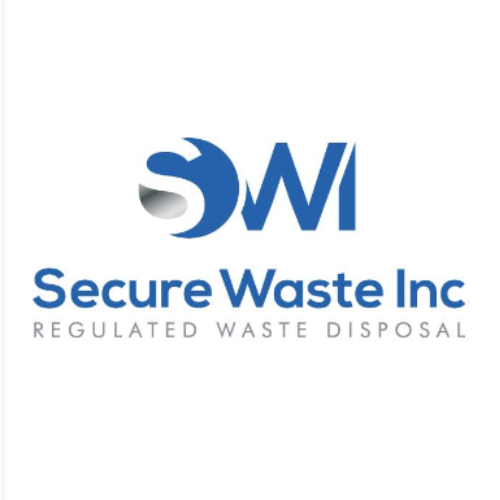
Expert Medical Waste Management: With over 25 years of industry experience, Secure Waste is a trusted local leader in hazardous and biohazardous waste disposal across Maryland, Virginia, and Washington, D.C. Specializing in medical waste management, sharps needle disposal, and biohazard waste removal, the company ensures full compliance with federal, state, and local regulations while prioritizing environmental sustainability.
The company also offers additional services, including secure document shredding and sharps container sales, providing comprehensive solutions for healthcare facilities and businesses. Our cost-effective services help clients maintain regulatory compliance without unexpected costs.
With a commitment to customer satisfaction, Secure Waste offers tailored waste management plans that align with industry best practices. Their team of experts provides reliable, timely, and compliant services, making them the preferred choice for medical waste disposal. For a free waste quote or more information, visit www.securewaste.net
